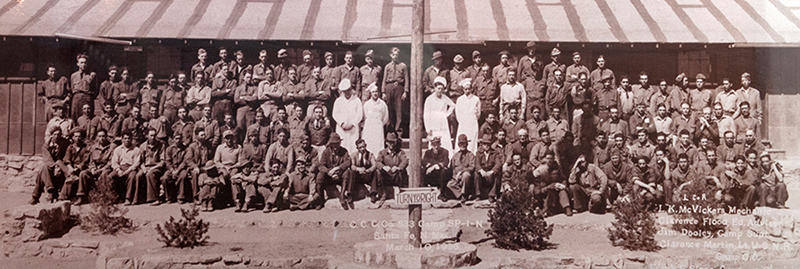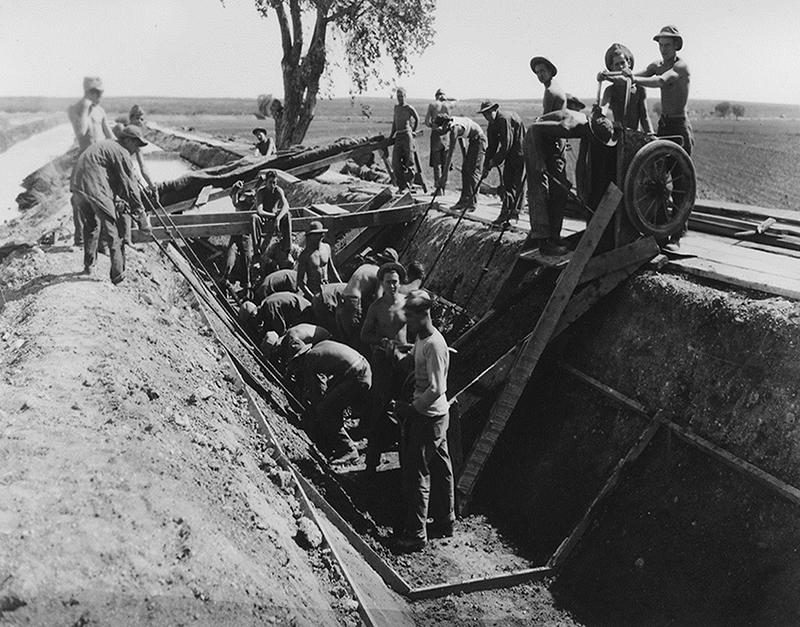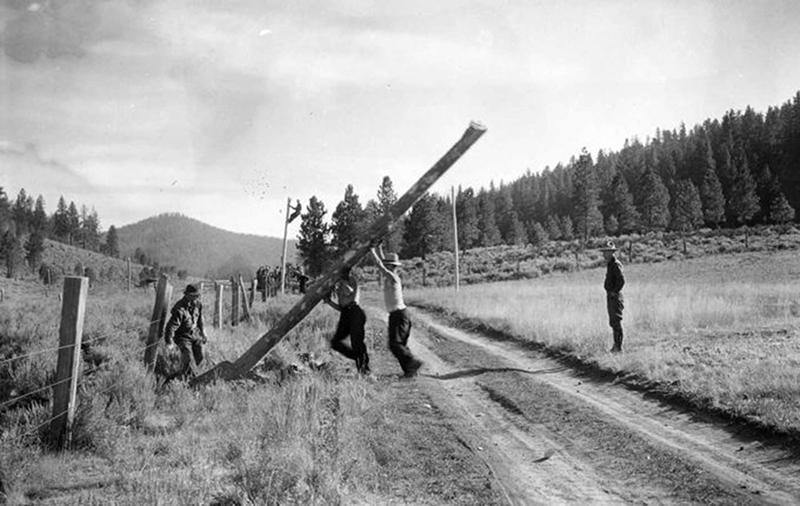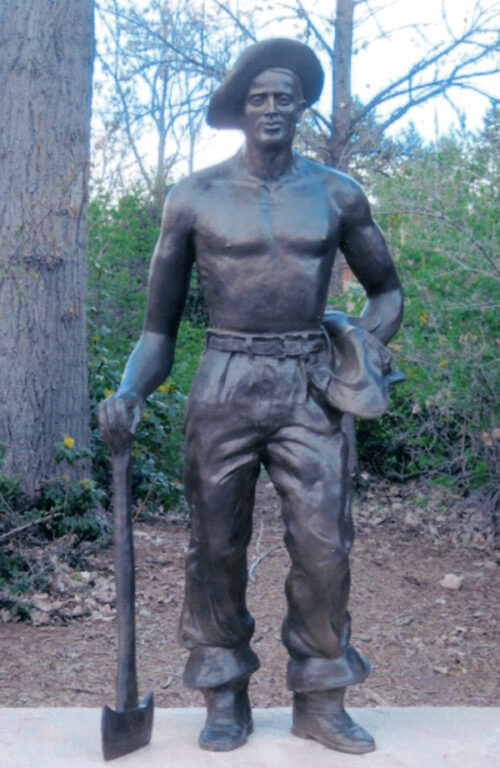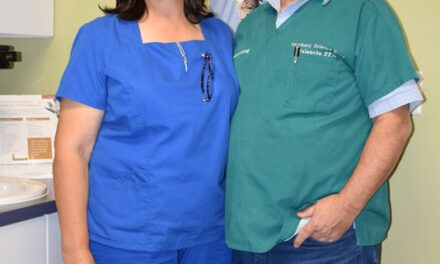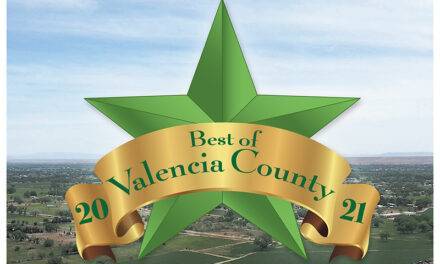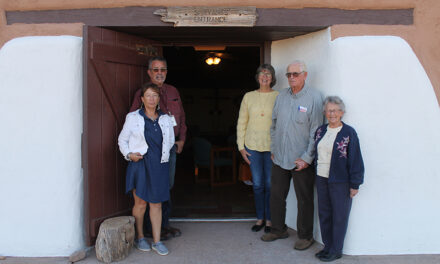La Historia del Rio Abajo
President Franklin D. Roosevelt’s New Deal included a long list of programs designed to assist the United States in its recovery from the darkest days of the Great Depression.
Roosevelt’s New Deal offered hope for millions of Americans left destitute by the ravages of unemployment and abject poverty.
The Civilian Conservation Corps (CCC) was undoubtedly the most popular New Deal program of the 1930s. Few people found fault with the CCC’s primary purpose: to put poverty-stricken young men to work conserving some of the country’s most endangered natural resources.
The CCC was especially appreciated in New Mexico where the unemployment rate ran as high as 50 percent. With little training or work experience, young people had it particularly hard to compete for the few available jobs in the state.
Over 30,000 New Mexicans served in the CCC, including Leonard W. “Si” Porter, originally from Corona and later of Belen. I had the pleasure of meeting Si in 1990, a few years before he passed away.
Si had written about his CCC memories in a manuscript, which he and his family kindly shared with me. I have reduced this 14,000-word document to let Si tell us his story in his unique, candid and clever way.
Didn’t have a dime
There were nine kids in my Porter family tree — four girls and five boys. I was number seven, a tall, skinny guy, 16 years, but not old enough to get a job even if there had been one in or near our small town of Corona. My future didn’t look very bright.
We had a small farm, but we couldn’t make a living on it anymore. We mostly ate pinto beans and venison at our house. We had no electricity, and we drew our water from a cistern.
My dad was in bad health. Dr. Barry would always get by our house on his rounds to check on my dad. He never did bill my folks for house calls or medications.
One type of medicine he gave my dad was a powder, and dad was supposed to take what he could pile on a dime. My dad didn’t have a dime so he used two nickels.
A ringside seat
Sometime during the summer of 1935, we started hearing rumors that a 200-man CCC camp was going to be put in somewhere around Corona. The rumors were very upsetting to a lot of people.
Most of the single boys and some of the married ones expected to have to whip all the CCC boys and run them clear out of the state. Most of the girls, including my youngest sister, thought they would be raped and mistreated by the type of boys that would work in the CCC camp, especially boys from Texas.
Within a short time the CCC camp became a sure thing. The U.S. Forest Service brought in machinery to clear off an area in the ranger station pasture.
My folks were going to have a ringside seat since the camp would be just barely one mile from our house. Maybe I would play an active part in it. Maybe I could even get to be a CCC boy.
At first, I did not work at the new camp, but I did find a lot of friends. The cooks were real friendly, and I soon found out that beans and venison were not the only things people ate.
Country dances were pretty common. Some of the CCC boys were pretty good fiddle and guitar players and helped out with the music.
The local girls soon got friendly, and it didn’t take so long for the local men to decide they could not whip all the CCC boys and run them out of the country.
Even my skeptical sister considered most of the CCC boys almost human. One must have actually been human, since she married him after not too many months.
Hired
I had started as a sophomore in high school, but I soon realized that the teachers did not like me, and I sure did not like them.
My brother, Earl, who worked at the CCC camp, learned that they might be hiring as many as six new local workers. I could be one of them if I could report to work by 4 p.m. that day. I got back to the camp before Earl did.
In my first days in the CCC camp, I got put on KP (kitchen police duty). I didn’t mind because I got to eat good and smuggled out lots of fresh fruit.
There were lots of uncomplimentary remarks about the food served in the mess hall, but most of the boys seemed to gain weight.
Later, I got to do other jobs. If I liked a foreman and he bragged on me, I would work hard. If I didn’t like a guy, I wouldn’t work at all. I got on a fence building job with a leader I liked. That fence is still there, and it’s still solid.
When our CCC camp moved from Corona to High Rolls, the foreman in charge was a big man. He looked capable of taking over the Tarzan role for any movie producer in Hollywood. In fact, at lunchtime or at quitting time he would give a big Tarzan yell that could be heard for miles, and the men would come running from every direction.
I almost developed a good reputation in the coming months. I cared for horses, worked on soil erosion control, fought forest fires and helped on a surveying crew, my most interesting job in the CCC.
Moving on
After 2 1/2 years in CCC camps, it was time for me to move on. But the CCC could not stand for us to be idle even on our last day. All of us going north would have a night trip so, until we left, we were sent to the kitchen for KP.
I had been helping another guy washing dishes when I noticed he didn’t seem to be too interested in getting them clean. When I found dishes he had not cleaned good I would tell him to clean them again.
His temper started showing, and he told me that we were leaving tonight and we would not be eating off these plates again, so why worry?
I told him I had a lot of good friends who were not leaving, and I didn’t want to leave any dirty dishes behind for them.
I had learned to take pride in my work, no matter how small the job and no matter how little time I had left in the CCC. I was doing KP, just as I had done on my first day in the CCC, but I had learned to do it with a different attitude and with better results.
That is pretty much the story about the CCC camps. Some of the things were fun. Some were not so fun. There were some boys who were a lot better workers than I was and a lot that were worse. I expect my part is about like an average young guy in that time.
The rest of Si’s story
Si Porter’s experience in the CCC ended on the eve of World War II. Like millions of other former CCC workers, Porter served in the military during the war, using his CCC training and work ethic to great advantage to himself and his country.
Receiving an honorable discharge from the Army at war’s end, Porter raised a family while working for the Santa Fe Railroad for 30 years.
No one could have asked more from a person and a generation whose future had looked so bleak just years before, at the height of the Great Depression.
Civilian Conservation Corps projects
Examples of the many CCC projects still in use in 2023, the 90th anniversary of the new deal and the CCC
- Bosque del Apache National Wildlife Refuge and visitors center
- Cat Walk in Whitewater Canyon in the Gila Wilderness
- Visitors center and steps into Carlsbad Caverns
- Visitors center at White Sands National Park
- Visitors center, roads and trails at Bandelier National Monument
- Kiwanis Cabin, trails and picnic areas in the Sandia Mountains
(La Historia del Rio Abajo is a regular column about Valencia County history written by members of the Valencia County Historical Society since 1998.
A longer version of this article appeared in the New Mexico Historical Review in 2005. The journal’s editor, Durwood Ball, has kindly granted permission for its edited use in La Historia.
For more about the Civilian Conservation Corps in New Mexico, see the author’s book, “Coming of Age in the Great Depression.”
Opinions expressed in this and all columns of La Historia del Rio Abajo are the author’s alone and not necessarily those of the Valencia County Historical Society or any other group or individual.)
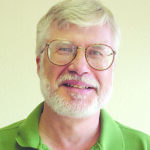
Richard Melzer, guest columnist
Richard Melzer, Ph.D., is a retired history professor who taught at The University of New Mexico–Valencia campus for more than 35 years. He has served on the board of directors of the Valencia County Historical Society for 30 years; he has served as the society’s president several times.
He has written many books and articles about New Mexico history, including many works on Valencia County, his favorite topic. His newest book, a biography of Casey Luna, was published in the spring of 2021.
Those interested in joining the Valencia County Historical Society should contact Dr. Melzer at [email protected].
